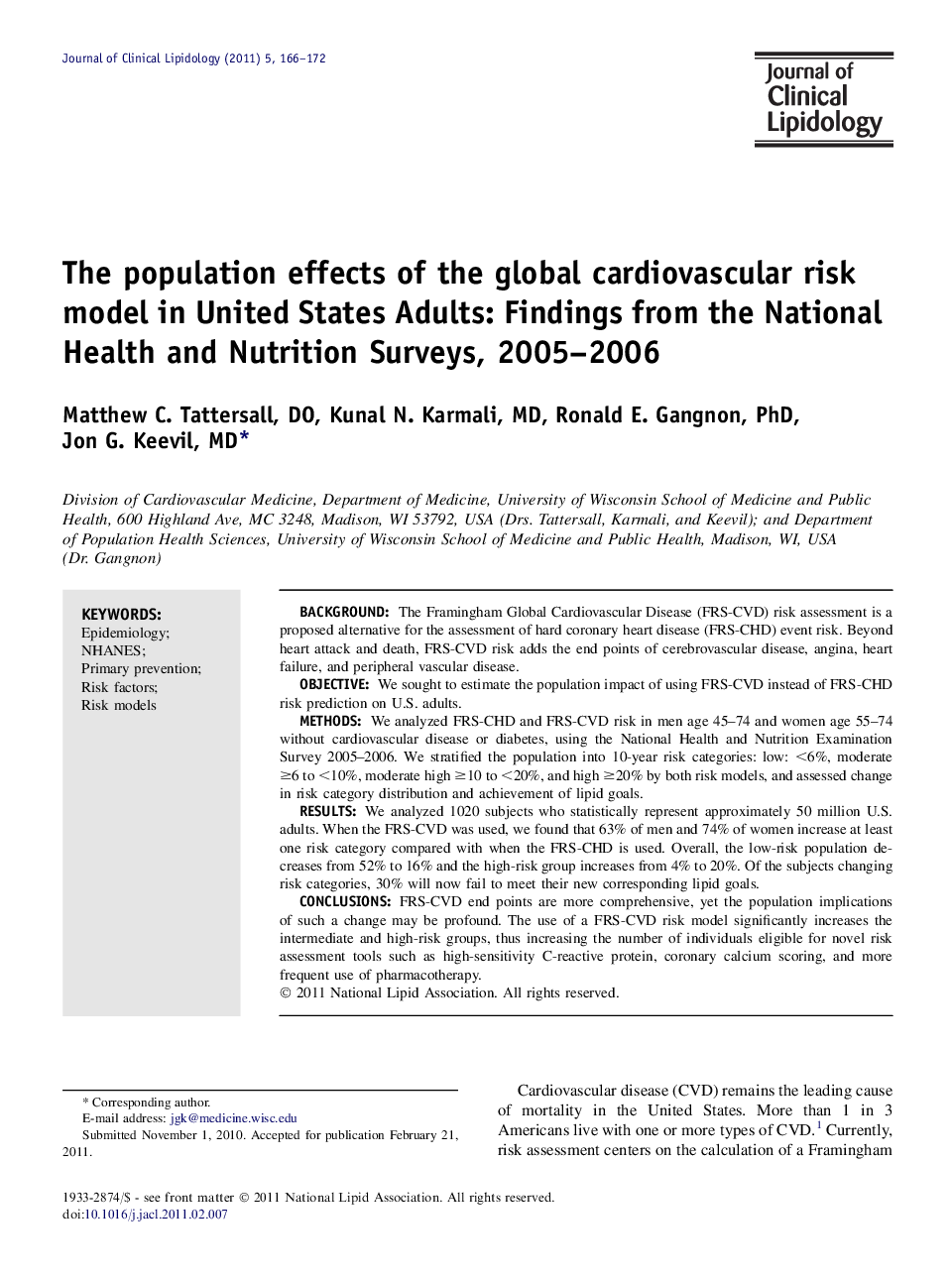| Article ID | Journal | Published Year | Pages | File Type |
|---|---|---|---|---|
| 2966484 | Journal of Clinical Lipidology | 2011 | 7 Pages |
BackgroundThe Framingham Global Cardiovascular Disease (FRS-CVD) risk assessment is a proposed alternative for the assessment of hard coronary heart disease (FRS-CHD) event risk. Beyond heart attack and death, FRS-CVD risk adds the end points of cerebrovascular disease, angina, heart failure, and peripheral vascular disease.ObjectiveWe sought to estimate the population impact of using FRS-CVD instead of FRS-CHD risk prediction on U.S. adults.MethodsWe analyzed FRS-CHD and FRS-CVD risk in men age 45–74 and women age 55–74 without cardiovascular disease or diabetes, using the National Health and Nutrition Examination Survey 2005–2006. We stratified the population into 10-year risk categories: low: <6%, moderate ≥6 to <10%, moderate high ≥10 to <20%, and high ≥20% by both risk models, and assessed change in risk category distribution and achievement of lipid goals.ResultsWe analyzed 1020 subjects who statistically represent approximately 50 million U.S. adults. When the FRS-CVD was used, we found that 63% of men and 74% of women increase at least one risk category compared with when the FRS-CHD is used. Overall, the low-risk population decreases from 52% to 16% and the high-risk group increases from 4% to 20%. Of the subjects changing risk categories, 30% will now fail to meet their new corresponding lipid goals.ConclusionsFRS-CVD end points are more comprehensive, yet the population implications of such a change may be profound. The use of a FRS-CVD risk model significantly increases the intermediate and high-risk groups, thus increasing the number of individuals eligible for novel risk assessment tools such as high-sensitivity C-reactive protein, coronary calcium scoring, and more frequent use of pharmacotherapy.
